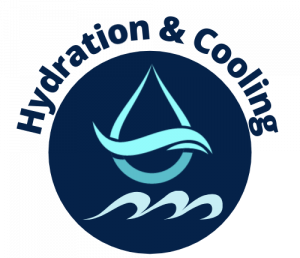When storms hit your baseball field, quick and proper tarp removal is essential. Learn safe, efficient emergency procedures to get your field playable again.
_______________________________
Post-Storm Field Recovery: Emergency Baseball Tarp Removal Procedures
When Storms Pass: Tackling Tarp Removal Safely
After a storm rolls through, getting your baseball field back in playing condition quickly becomes the top priority. The way you handle tarp removal can make all the difference between a quick recovery and hours of extra work—or worse, field damage. Baseball field tarps can collect hundreds of gallons of water during heavy storms, creating not just a removal challenge but also potential safety hazards for your grounds crew.
At Hydration and Cooling, we know that proper post-storm field management is critical for teams at all levels. With the right emergency tarp removal approach, you can minimize downtime and protect both your staff and your playing surface. Let’s walk through the essential steps to safely and efficiently remove field tarps after weather events.
Assessing the Situation: Safety First
Before anyone touches the tarp, take time to evaluate conditions. What might seem like a simple task can quickly become dangerous without proper planning.
Start by checking that the storm has completely passed. Look for lightning in the area, and wait at least 30 minutes after the last lightning strike before sending anyone onto the field. Next, assess the water volume on the tarp—even a moderately-sized baseball tarp can hold several hundred pounds of rainwater, making improper removal attempts not just difficult but potentially harmful to crew members.
Check the field perimeter for any storm damage like fallen branches or debris that might need clearing before you begin tarp work. Make sure you have enough team members present for safe handling—attempting removal with too few people is a common mistake that can lead to injuries and equipment damage.
Emergency Tarp Removal: Step-by-Step
Water Removal Techniques
The first challenge is dealing with accumulated water. Large puddles on your tarp create weight that makes movement difficult and dangerous.
For significant water accumulation, use submersible pumps positioned at the lowest points of the tarp. For moderate water, the “rolling wave” technique works well—crew members create a small fold in the tarp edge and carefully roll the water toward a field drainage area or the outfield grass. Always direct water away from the infield dirt and pitcher’s mound to prevent saturation of these critical areas.
Coordinated Removal Process
Once most water is cleared, you’re ready for actual tarp removal. This requires clear communication and coordination.
Position team members evenly around the tarp perimeter, ensuring everyone has a solid grip on the material. Designate one person as the coordinator to call out commands. On the coordinator’s signal, lift the tarp edges waist-high and walk in unison toward the designated folding or rolling area. Moving too quickly or unevenly can cause tears in the tarp or strain injuries to staff.
For larger field tarps, use the “accordion fold” method—create 5-8 foot folds while moving in one direction, which makes subsequent unfolding much easier when the tarp needs to be deployed again.
Special Considerations for Different Weather Conditions
Wind presents special challenges during tarp removal. In breezy conditions, keep the tarp low to the ground during removal and consider using sand bags as temporary weights. In cold weather, take extra care as tarps become less flexible and more prone to tearing.
For fields dealing with continuing light rain, you might need to create a slightly sloped removal path to prevent water from pooling in unwanted areas during the removal process.
Post-Removal Field Assessment
After removing the tarp, inspect the field for wet areas that might need attention. The pitcher’s mound and batter’s boxes often require special care. Check for any tarp-related damage to the playing surface and address it before resuming play.
This is also the time to examine your tarp for any damage sustained during the storm or removal process. Small tears should be repaired promptly to prevent expansion during future use.
Drying and Field Preparation
For quicker drying of damp areas, consider using field drying agents on dirt surfaces. Allow proper ventilation across the field by removing any unnecessary equipment that might block air circulation. For tournament situations where quick turnaround is essential, portable fans can help speed up the drying process in problem areas.
Need Reliable Hydration Solutions For Your Team During Recovery Work?
Field recovery is hot, demanding work. Keep your grounds crew properly hydrated with our Team Water Tankers and portable hydration stations. Our 35-gallon rechargeable tankers ensure your staff stays safely hydrated during extended field restoration efforts.
When life gets hot • We do cool! Call us today at 1-800-XXX-XXXX to discuss your team’s hydration needs or request a quote online.
Training Your Crew for Emergency Situations
Having a well-trained grounds crew makes all the difference during emergency tarp removal. Regular practice sessions in different weather conditions help build the muscle memory and teamwork needed for efficient tarp handling. Create a clear chain of command for tarp operations so everyone knows their role when storms approach.
Document your specific field’s tarp procedures, including the minimum number of people needed, optimal folding patterns, and field-specific drainage considerations. Review these procedures seasonally and update them based on lessons learned from actual storm events.
